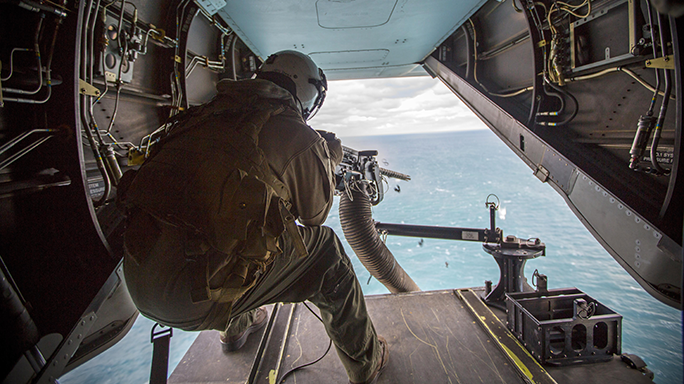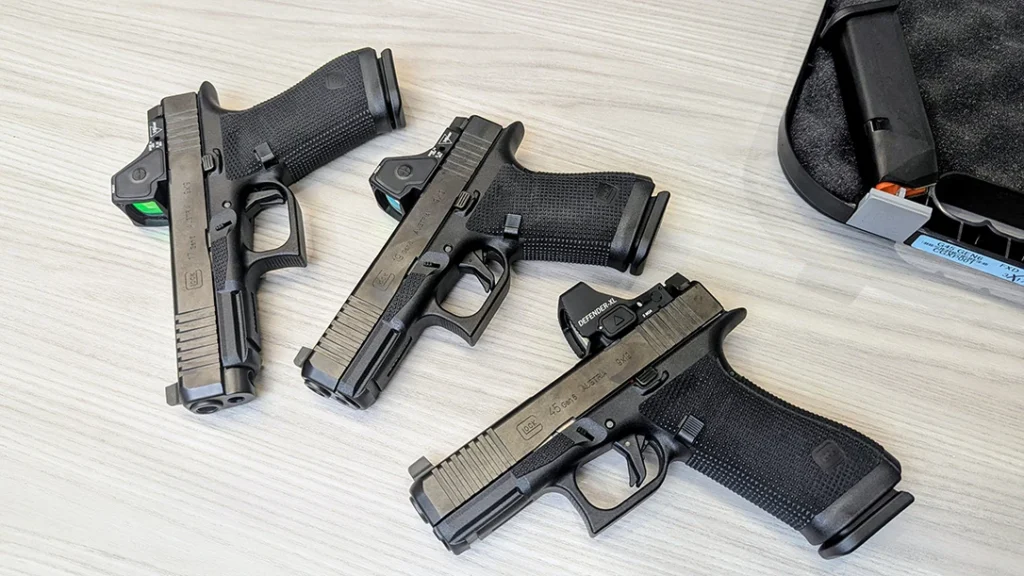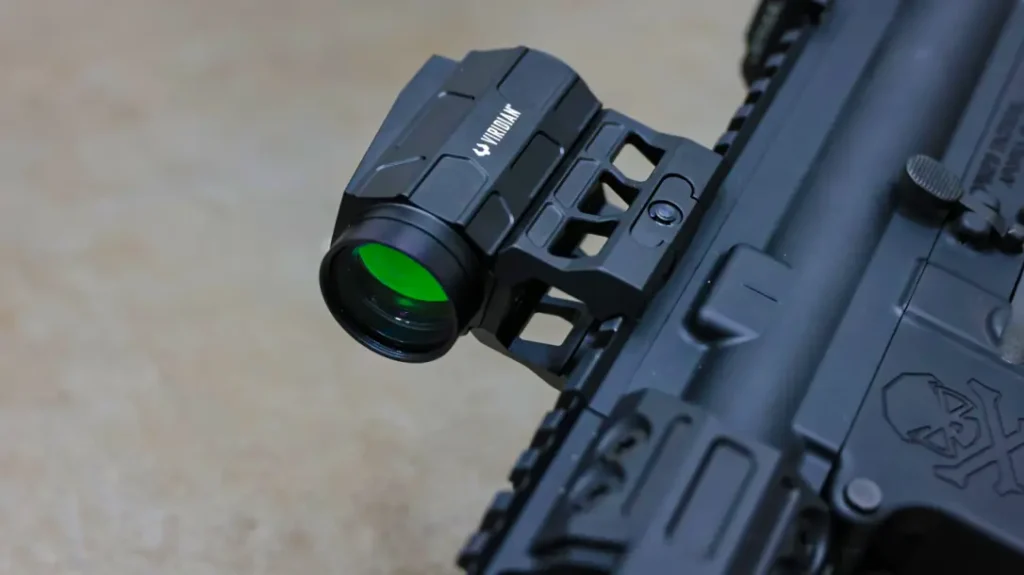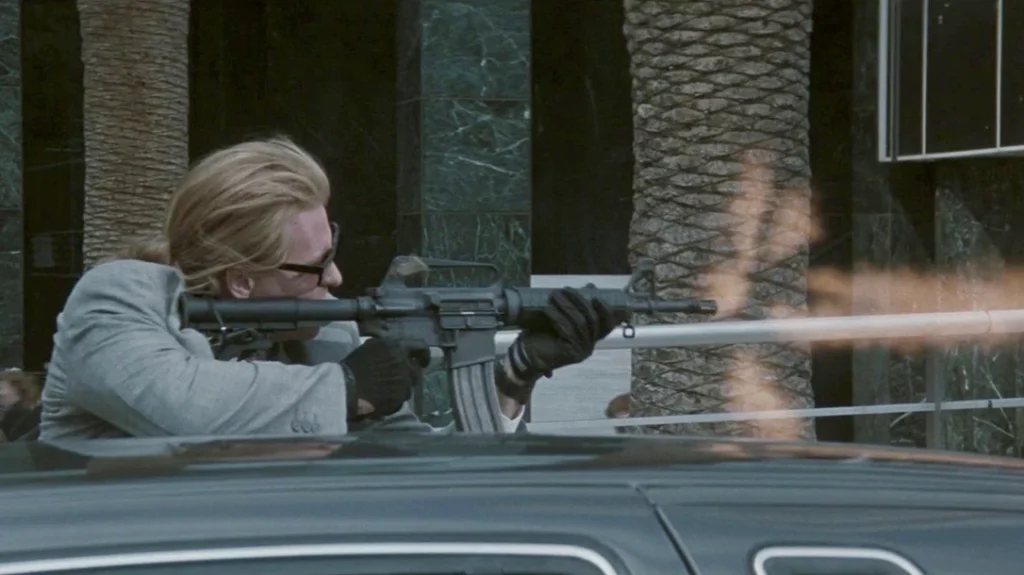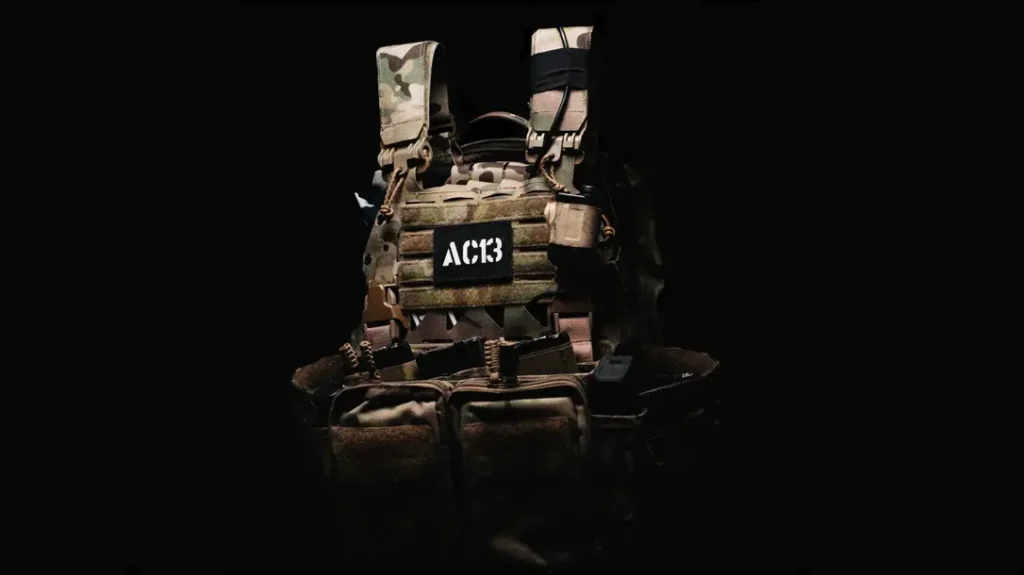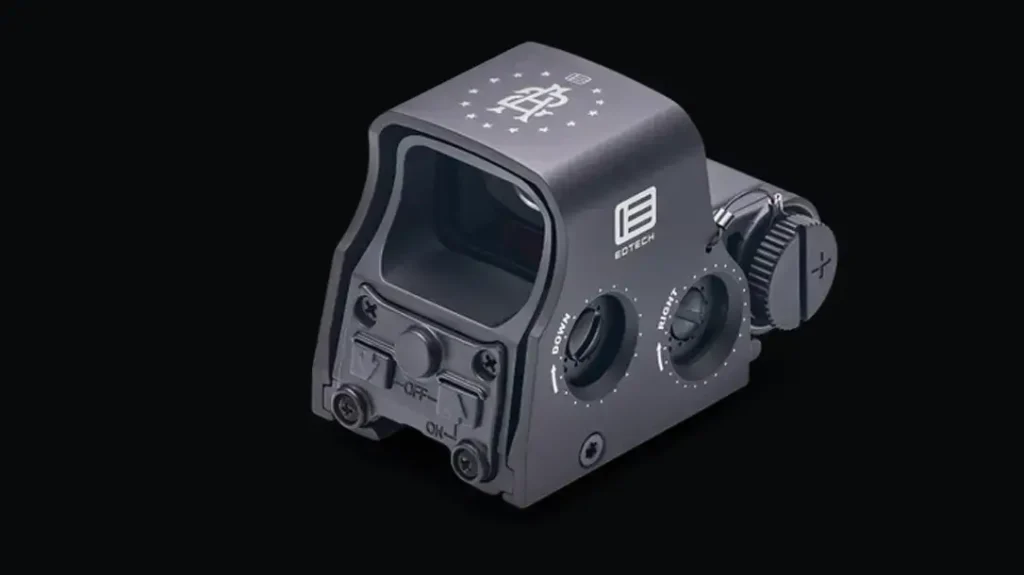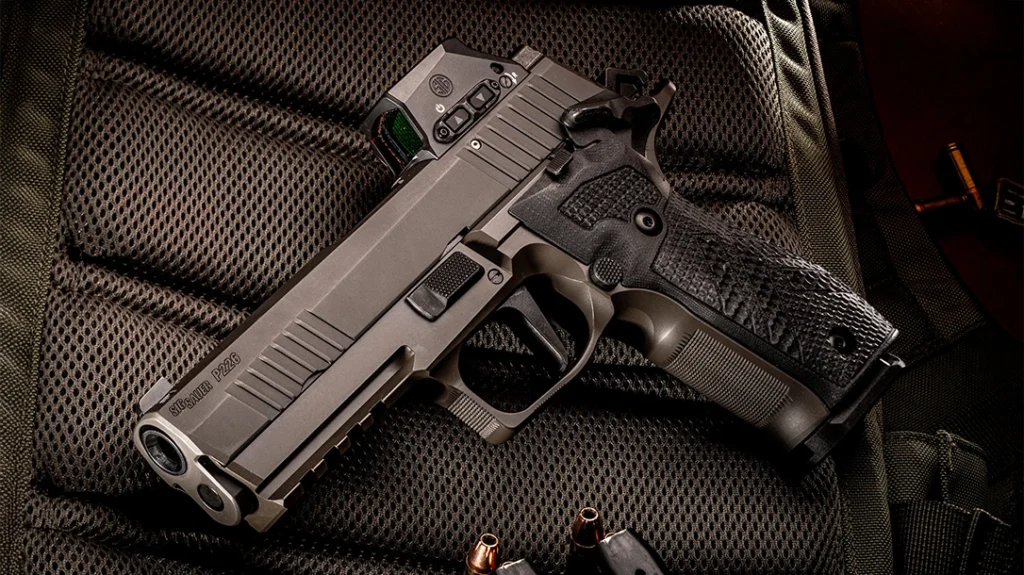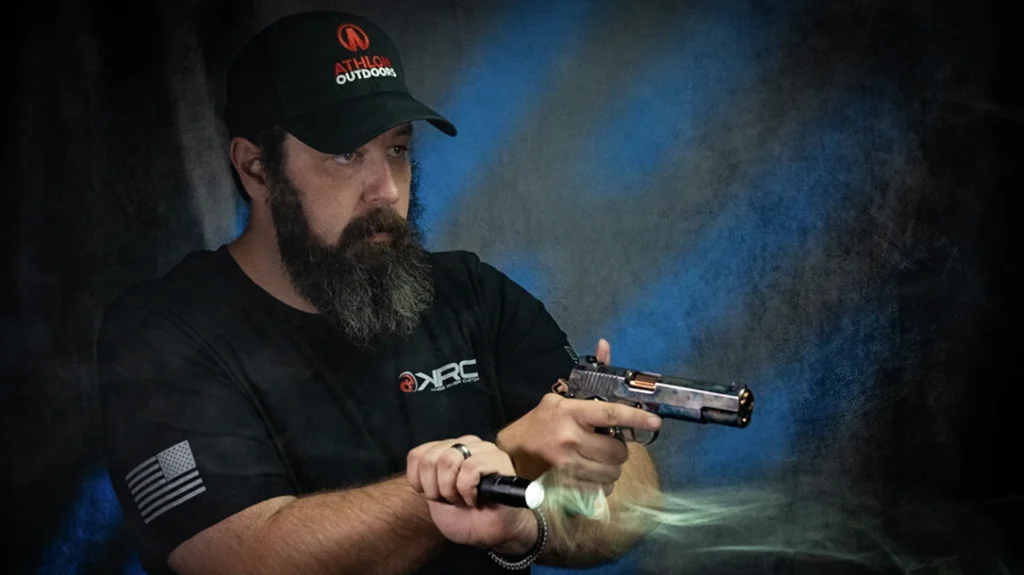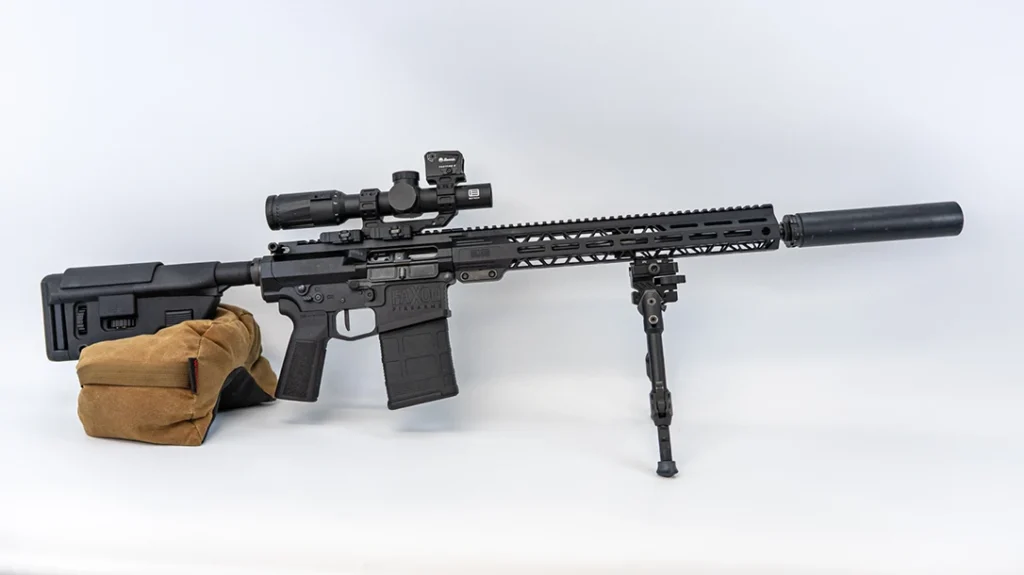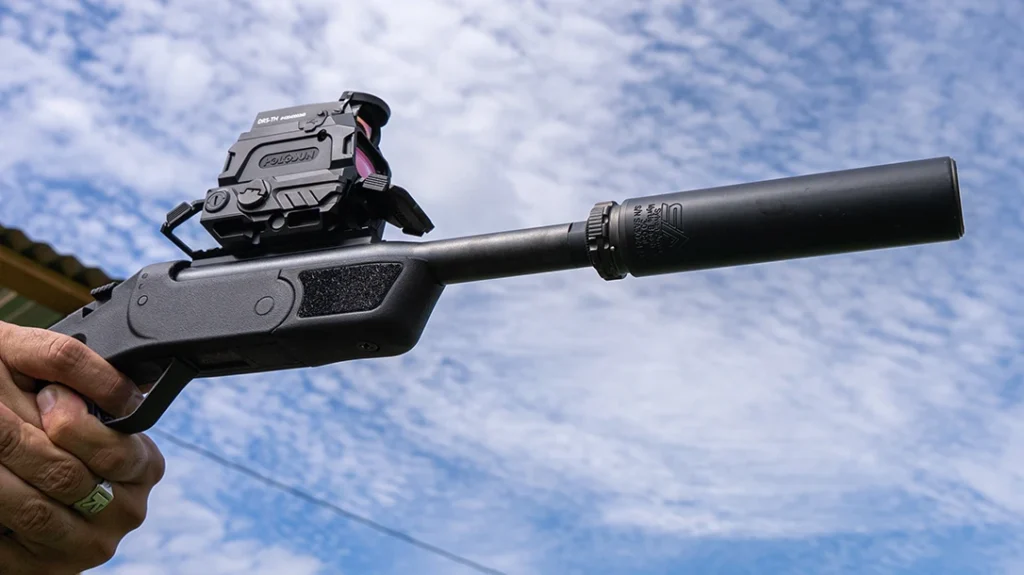The following is a release from Lance Cpl. Aaron Fiala, II Marine Expeditionary Force:
Marines with Marine Medium Tiltrotor Squadron 365 conducted section confined area landings and a M2 Browning .50-Cal machine gun shoot from Marine Corps Air Station New River, N.C., Feb. 10.
Marines with the unit flew two MV-22B Ospreys to a landing zone for familiarization flight training, which allowed pilots to practice landings. After practicing CALs, the crew flew off the coast to a safe distance in order to practice shooting the machine gun from the back of the aircraft.
Advertisement — Continue Reading Below
Prior to their flight, the pilots and crew gave a brief which covered information about the aircraft’s capabilities, as well as factors that may affect the flight, such as current and expected weather conditions. The crew conducted a thorough inspection of their Osprey and after the aircraft was deemed safe and ready for flight, they took to the sky.
“Section CALs is just one of the biggest basic building blocks into what we do,” said Capt. Edward K. Williams, a pilot with the unit. “You have got to master that before you can get three or four aircraft into a zone and then move on to doing that at night.”
The pilots and crew traveled to a nearby landing zone to practice landings and take-offs. For this part of the flight there were two Ospreys landing within close vicinity.
Advertisement — Continue Reading Below
“The purpose of the training today was mainly proficiency,” said Lance Cpl. Jarod L. Smith, a crew chief with the unit. He explained how of the two aircraft, one had fairly experienced pilots and crew but the other aircraft had a newer pilot who was getting his initial code.
Smith explained that pilots acquire different codes for the flights they conduct.
Once the initial CALs flight was completed, the Marines returned to the hangar to refuel and then flew out for a .50-caliber machine gun shoot.
Advertisement — Continue Reading Below
“The tail guns are important because [they] are our primary weapon,” said Williams. “If there is a threat in the zone the crew chiefs need to be proficient to be able to engage a threat without prior notice.”
The .50-caliber machine gun was mounted on a pivot in the back of the Osprey. The pivot allows the weapon operator to take advantage of a wide angle to effectively engage any target. Smith explained how firing these larger rounds offer more penetration than other munitions and allow the gunner to engage enemies at greater distances.
The Osprey made several passes allowing each of the crew members in the back to practice firing the weapon system. Each pass involved firing into an area of the ocean while keeping a tight group on the rounds fired.
Advertisement — Continue Reading Below
Williams explained how despite this training being conducted on a regular basis it is still not routine. Every time Marines fly, the training requires the same amount of preflight planning and briefing. A lot of work goes into preflight planning as well as debriefs.
Debriefs allow pilots and crew chiefs to assess their flights and determine how to improve their next flight. Even if the flight goes according to plan, Marines always look for ways to improve for future operations.
“Training is important because as Marines we pride ourselves in readiness,” said Smith. “We need to be proficient in confined area landings because that is what you’re going to [conduct] when you’re anywhere.”
Advertisement — Continue Reading Below
